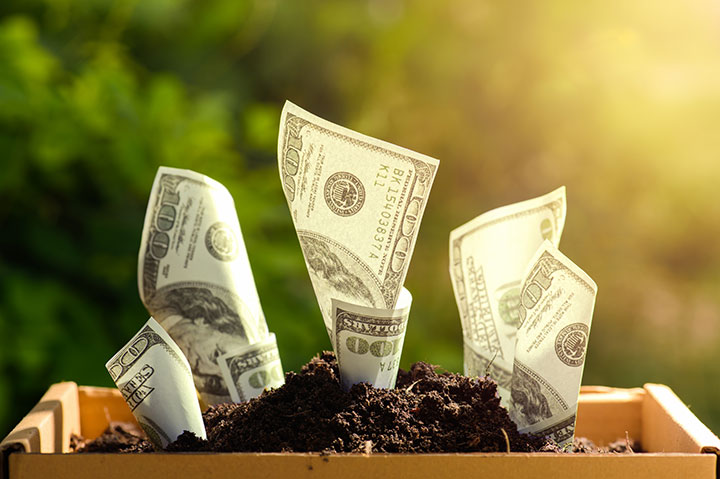The next time somebody tries to sell you some investment plans, ask him (or her) this – “What’s the annual compounded return that I can expect on my own actual money invested?” If he can’t understand the meaning of “compounded returns” or “own actual money invested”, then he is really not qualified to advise you on any investment plan. If he gives you a percentage, then you should know exactly how much of your money invested would materialise in a certain period of time, given a set of assumptions. That’s the basic of investment. One must have an objective before taking the plunge. There has to be a financial goal. Otherwise you are just investing for the sake of investing without knowing where it takes you.
Let’s say you aim to accumulate RM1 million in 10 years by putting aside or investing a certain fixed sum every month. Let’s start with the most basic way, by allocating a certain sum every month into a bank savings or fixed deposit account. The best rates you can get in the market today pays 4.5%. To save RM1 million in 10 years with a constant return of 4.5% per annum (p.a.) compounded, you would need to save RM6,590 every month for the next 10 years. That’s a lot of savings for the typical Malaysian.
What other investments can you look at? Unit trust or mutual funds? The top 10 best performing mutual funds in Malaysia made an average return of 12.71% p.a. over the last 10 years. Not bad, considering it beat the returns of the KL Stock Exchange ($KLSE @ average returns of 8.09% p.a. over 10 years 2005-2015) and the Dow Jones over the same period ($DOWI @ 5.79%). Assuming the unit trust company you invest with is going to make the same returns of 12.71% p.a., you would need to invest RM4,126 per month to accumulate up to RM1 million in 10 years.
Compounded Returns On Your Money Invested – It Matters! Click To Tweet
A
None of the above is an easy route to take. Possible, but not attainable in practice. First, you need high discipline in constantly investing, month after month. As your account builds up, you may stop and ponder. Doubts set in, if your return is going to continue the way it did. You may also be tempted to dip into your accounts for a nice holiday, or to purchase luxuries, derailing your plan.
So what other types of investments to consider? ETFs, CFDs, forex, commodities (cotton, coffee, corns & pork bellies) & precious metals (gold, silver, platinum)? If you speak to enough investors involved in such investments, majority would have lost monies. You need to be at the top of your game to make significant meaningful profits from these markets. And a cool head too, with high control over emotions.
So what is the best investment that gives the best compounded returns? PROPERTIES! No doubt about it. Property investment is the best, safest and surest way to wealth accumulation. Every person planning for the future, either for their children’s education, or for retirement, must consider property investment. Property investment provides a high rate of return because of the leverage factor. Banks love to give loans for property purchase, as they are deemed to be the safest collateralised loans. Hence, an investor need not pay the full purchase price of the asset, he can take a loan of up to 90%. In fact, there’s lots of opportunities in the market today where one can structure a purchase to minimise the initial outlay, making it possible to buy a property from as low as RM5,000.
The table below show some examples of financial commitments required in buying and maintaining well selected properties within Greater Kuala Lumpur; and the resultant compounded returns. With such cash outlays and monthly commitment, it is definitely easier to accumulate wealth through property investments when compared to others.
B
A carefully selected property will always double in price within 10 years. That’s when substantial capital gains are made. One of my client purchased a property in 2009 costing RM258K with just a cash outlay of RM10K (and zero monthly maintenance thereafter) In 2014, he sold it off for RM450K, earning RM220K net profit (after repayment of bank loans and all other related selling expenses). That’s a staggering 2100% return over 5 years from the initial outlay of RM10K. Using the principle of compounded returns (where interest is added to principal annually), the rate of return will be 85.6% compounded annually over 5 years.
Another client invested RM25K in buying two properties worth RM520K in 2004 (also with zero monthly maintenance thereafter) and sold them off in 2014 for RM1.73 million, making RM1.38 million net profit That’s 5420% return over 10 years, but when compounded annually, the return is calculated to be 49.35%.
C
Investment in properties is a very lucrative business, as can be seen from the examples given above. In fact it is estimated that 90% of millionaires in the world made their money from properties. Be a landlord. Collect monthly rental from your tenants and hand that over to the bank to pay the monthly bank instalment. Do that willingly and patiently, for over a period of time, your property will increase in value, and your outstanding bank loan will decrease. When your loan is fully extinguished, then the rental income becomes a source of passive income. At any time, you can also sell your property to realise some cash.
Even if monthly rental income does not cover bank instalments, treat the shortfall as a “monthly commitment towards investment in properties. Treat that as a forced savings. But depending on your loan tenure, it is always possible to cover the bank instalment with the rental income, freeing cashflow to embark on a second purchase.
Learn how to invest in properties today; for investment in properties will give you the best compounded returns on your money invested!
–PROPERTY INSIGHT

